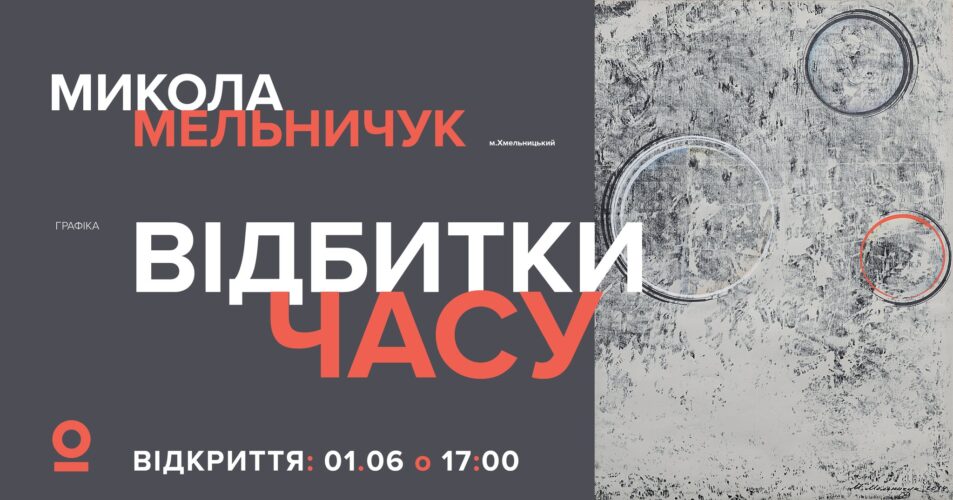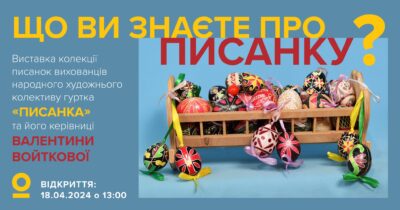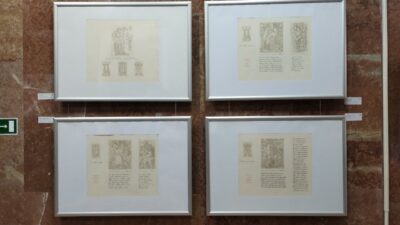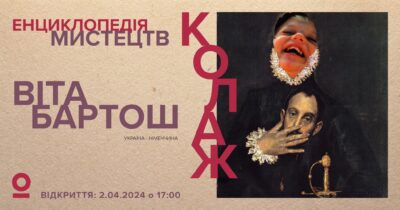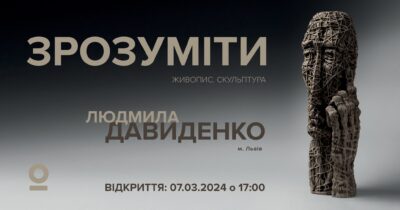The Revolution of Dignity initiated not only the process of political, but also a social and cultural transformations. The consequences of these events, which released a colossal social energy, will be felt for decades. This geopolitical and internal socially-political process has not yet been completed.
These troubled times became a powerful source of inspiration for artists. Numerous works of art were created: from thousands of posters to films. Mykola Melnychuk felt the same wave of inspiration. Revival of folk traditions, renewal of culture and raise of national consciousness were always the main ideas of his artworks. From the very beginning, he was on the Khmelnytskyi Maidan every single day, together with thousands of other citizens, to prove that Ukraine is a flourishing country with the great history that cannot be divided, and Ukrainians are united by the desire to live freely and independently.
Mykola Melnychuk, like many other artists, was inspired by the events of the Maidan, and described the artistic reflection in his monochrome works. They are very complex, abstract, you can look at them for hours (“Look and watch”). You can find a reflection of the artist’s emotions on these canvas. Several plots can be found in his works that are included to this exposition: dramatic events of the Revolution of Dignity (“Maidan I, II”, “Glory to Ukraine”, “For Ukraine, for its Liberty!”), annexation of the Crimea peninsula (“Annexation”), attempts of the enemy to split Ukraine (“Dug grave”, “Ukraine seethed”, “He walks in a red robe, watching like an executioner…”). The artist considers Taras Shevchenko and the Maidan events to be inseparable, as poems written 200 years ago are reflected in today’s events.
The artist used monotype* technique in the process of creating of these artworks. He used printer ink, ultra-thin paper and wooden plates (Mykola worked only with wood) to create a unique lines, dots and emotions. This technique is well known for its random result. Therefore, even the simplest print has its own charm. Unique artworks of Mykola Melnychuk are distinguished by a smooth color gradient and softness of contours, reminiscent of watercolor.
Mykola Melnychuk’s artworks are full of associations and personal experiences of the past years, filled with symbolism and philosophical reflections. There is practically no place for the figurativeness in such a fine art. “There is love, betrayal, blood. These paintings are pretty complicated. There are thousands of faces on them and they all laughing, suffering, dyeing”, – the artist comments.
Reference:
Mykola Melnychuk (was born in January 28, 1948 in the Semyrenky village, Khmelnytskyi region) – graphic artist, artist-restorer, iconographer, master of decorative and applied arts, the Chairman of the Khmelnytskyi regional branch of the National Artist’s Union of Ukraine.
He graduated in absentia from the Moskow People’s University of Culture named after N. Krupska (Faculty of Fine Arts) in 1969.
Artist worked at the Khmelnytskyi Art and Production Complex.
He participated in numerous municipal, national and international exhibitions. He also had many individual exhibitions, two of which were held in the Khmelnytskyi Regional Art Museum (“Peace to this house” in 2013 and “Expensive road” to the 200th anniversary of T. Shevchenko’s birthday in 2014). 4 graphic artworks of Mykola are stored in the museum’s funds.
Mykola is an author of iconostasis at Holy Trinity Brailiv convent (Brailiv town, Vinytsia region), iconostasis in the Starokostiantyniv temple and the Paraskeva Temple (Knyjkivtsi district, Khmelnytskyi), the five-level altar in the Iov Pochivskyi church (Ozerna district, Khmelnytskyi), the Bell Tower in honor of Heavenly Hundred Heroes (Zarichanska street, Khmelnytskyi), etc.
* Monotyping is a type of printmaking made by drawing or painting on a smooth, non-absorbent surface. The surface, or matrix, was historically a copper etching plate, but in contemporary work it can vary from zinc or glass to acrylic glass. The image is then transferred onto a paper by pressing the two together, using a printing-press, brayer, baren or by techniques such as rubbing with the back of a wooden spoon or the fingers which allow pressure to be controlled selectively. Monotypes can also be created by inking an entire surface and then, using brushes or rags, removing ink to create a subtractive image, e.g. creating lights from a field of opaque colour. The inks used may be oil or water-based. With oil-based inks, the paper may be dry, in which case the image has more contrast, or the paper may be damp, in which case the image has a 10 percent greater range of tones.
The first evidences of the use of monotype technique dates back to the XI century when the first print of Chinese engraving was made. The Dutch painter Hercules Pieterszoon Seghers or Segers (c. 1589 – c. 1638), Italian artist Giovanni Benedetto Castiglione (1609–1664) and William Blake (28 November 1757 – 12 August 1827) are often credited as being the first artists to produce monotypes in Europe.
